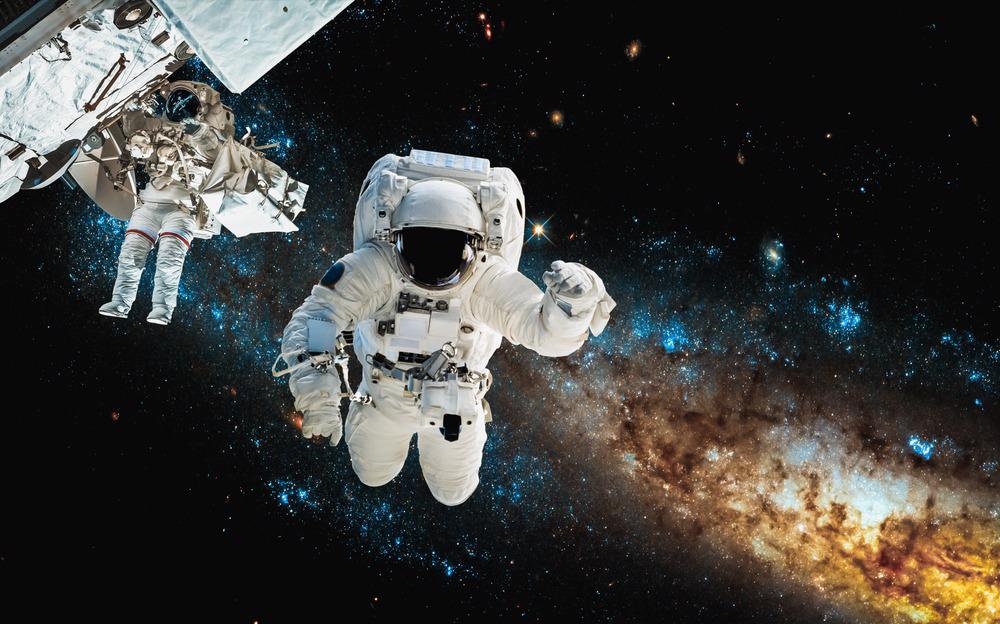Space agencies use sensors in all kinds of missions, from physical exploration of celestial bodies in the solar system to ground-based surveys from telescopes. This article discusses the significance of sensors for space exploration, outlining key applications as well NASA’s current sensing needs.

Image Credit: Blue Planet Studio/Shutterstock.com
Vision-Based Navigation on the RemoveDEBRIS Satellite
The RemoveDEBRIS satellite was launched from the International Space Station in May, 2018. The most complex payload of the 100 kg class satellite was a vision-based navigation (VBN) sensor using LiDAR technology.
The VBN sensor was made for RemoveDEBRIS’s active debris removal and space rendezvous applications. It enabled the satellite to identify the main tumbling axis and geometrical features of discrete pieces of space debris before mechanically latching onto the waste for cleanup.
Proximity navigation and capture of pieces of debris essential to the mission would have been impossible without the VBN sensor on board RemoveDEBRIS.
The VBN sensor on RemoveDEBRIS included two subsystems: a color camera and a flash imaging LiDAR sensor. In total, the sensor package is 10x10x15 cm3 with a mass of 2 kg. It captured 3D images from 50 cm to over 100 m away during the satellite’s successful two-year mission.
RemoveDEBRIS’s net captures space debris
Video Credit: SciNews/YouTube.com
Sensors for Surveying and Navigating on the Mars Reconnaissance Orbiter
The Mars Reconnaissance Orbiter (MRO) is a NASA mission that blasted off from Cape Canaveral in 2005. The mission is looking for evidence that water remained on Mars's surface for a significant period at some point in our closest solar neighbor's past.
Various instruments were used to seek out a history of water on the Red Planet's surface. Activities included analyzing minerals, looking for subsurface water, trace dust, and water distribution in the atmosphere, monitoring the planet's global weather every day.
The primary sensor application for this analysis is a suite of extremely high-resolution cameras and cameras recording light in non-visible spectra. One of these is the largest ever fitted to a planet-visiting spacecraft and can spot objects as small as a dinner table on Mars's surface from MRO's orbit.
An imaging spectrometer analyzes small-scale areas about the size of a tennis court to identify hot springs or other tiny water features.
Sensors are also used to navigate MRO around its Mars orbit.
The spacecraft is fitted with 16 sun sensors (eight of which are backups) around its chassis so that the onboard computer always knows where it is positioned in relation to the Sun. These sensors are very simple, only outputting a binary "I see the Sun/I don't see the Sun" message.
Listen To Martian Wind Through NASA Insight Lander’s Sensors
Video Credit: VideoFromSpace/YouTube.com
MRO needs solar energy to power itself, so knowing where sunlight is, is vitally important to the mission. The Sun sensors are only used when the spacecraft first wakes up after launch, and during emergencies if it has to be rebooted. At other times, the onboard computer can determine where it is pointed based on preliminary data.
There are two star tracking sensors on the MRO (one is a backup). These are smart cameras that take pictures of stars and compare that data with their own database of stars, enabling the spacecraft to find out the exact location in space and in relation to Earth and Mars. This spatial knowledge is vital for the spacecraft to carry out any maneuvers, such as entering Mars's orbit, changing orbit to study another area of Mars's surface, or evading asteroid and meteoroid strikes.
The star tracker updates with a new picture every 10 seconds, so the MRO spacecraft always knows where it is in space. There are also two inertial measurement units on board, combining three accelerometers with three ring laser gyroscopes. There are three of each for each axis of the spacecraft.
The accelerometers measure changes in speed (acceleration), providing feedback data for maneuvers requiring the craft to fire its blasters while the gyroscopes measure how quickly the craft is turning, as well as estimating its orientation.
NASA's Space Sensor Requirements
NASA's SBIR (small business innovation research) and STTR (small business technology transfer) programs fund innovative technology development in the private sector that fulfills NASA's needs.
In situ sensors are needed for planetary science missions that NASA is planning, required to characterize planets and other celestial bodies' atmosphere, surface, and subsurface regions. These sensors will be deployed on surface landers and rovers, as well as in satellite and spacecraft operations like MRO. They have to withstand extreme temperatures, pressure, radiation, and impact stresses.
Miniaturized instruments for mass spectrometry and gas chromatography are needed, as well as miniaturized components for pumps, sample inlet systems, valves, bulk sample handling, and microfluidic sample preparation technologies.
Optical subsystems and wavefront sensing are required for collecting and controlling star light with advanced optical telescopes and telescope arrays. Systems that collect optical signals for all regions of the electromagnetic spectrum are needed.
NASA is specifically interested in high reflectance UV coatings, uniform polarization coatings for all wavelengths, and high angular resolution imaging. They are also looking for detector technology for IR, far IR, submillimeter, and millimeter wavelengths. Polarimetry and large format imaging arrays for these advanced spectroscopy methods will provide these.
Continue reading: Splitting Up the Sensors in NASA's InSight Mission.
References and Further Reading
CSEM (2020) The Role of LiDAR in Space. AZO Sensors. Available at: https://www.azosensors.com/article.aspx?ArticleID=2047
Mars.nasa.gov. (2021) Overview. [online]. Available at: https://mars.nasa.gov/mro/mission/overview/
Sbir.nasa.gov. (2021) Space Science and Exploration Sensors and Instruments | NASA SBIR & STTR Program Homepage. [online]. Available at: https://sbir.nasa.gov/content/space-science-and-exploration-sensors-and-instruments
Disclaimer: The views expressed here are those of the author expressed in their private capacity and do not necessarily represent the views of AZoM.com Limited T/A AZoNetwork the owner and operator of this website. This disclaimer forms part of the Terms and conditions of use of this website.